PHUSICOS NBS spring school
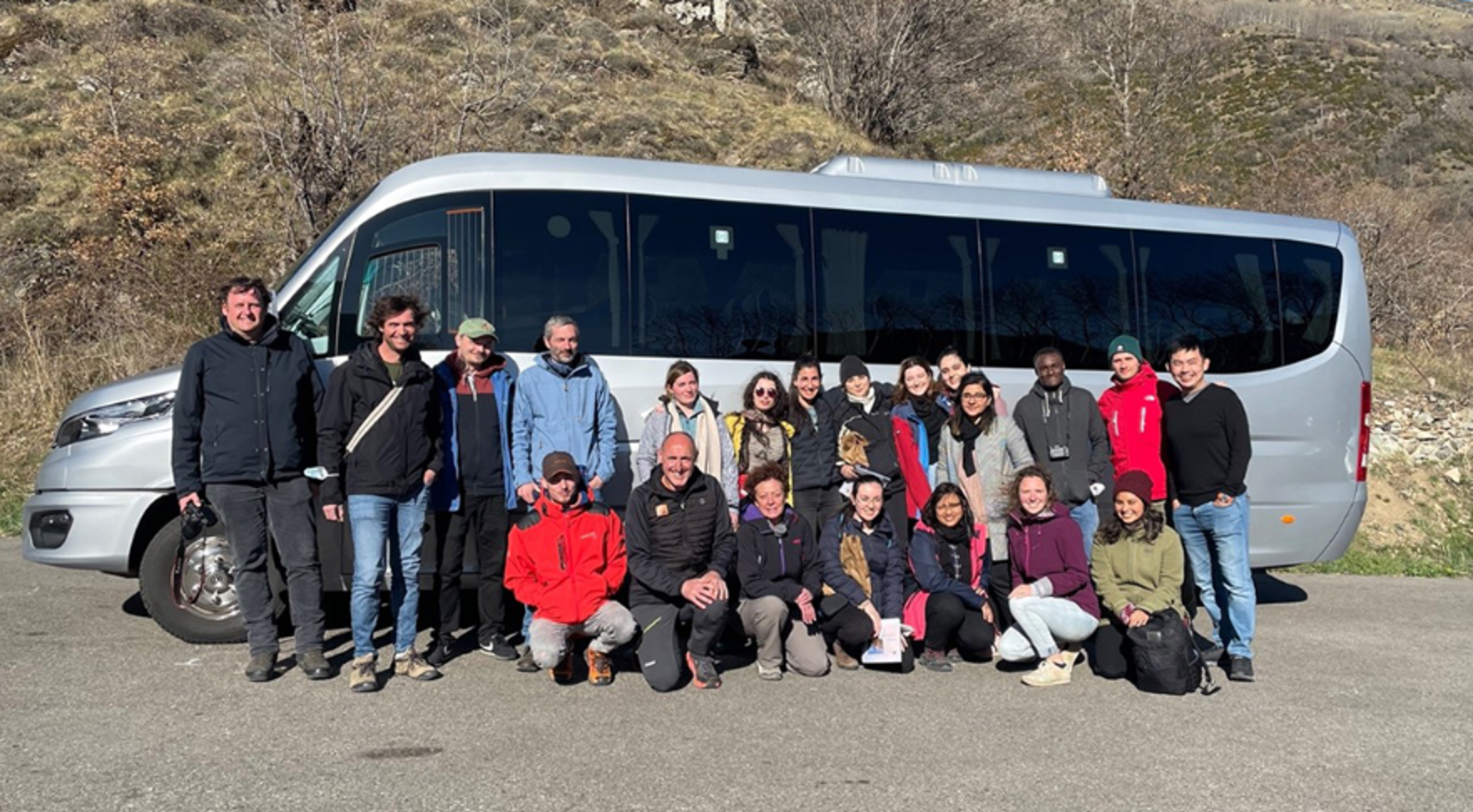
The Technical University of Munich (TUM), in collaboration with Bureau de Recherches Géologiques et Minières (BRGM) and Observatoire Pyrénéen du Changement Climatique (OPCC) organized and moderated a spring school from April 2-11, 2022.
The PHUSICOS spring school on nature-based solutions (NBS) for hydro-meteorological hazard mitigation in rural mountainous landscapes hosted participants from Asia, Africa, Europe, the Middle East and North and South America. They were students at various degrees of learning such as bachelors, masters or doctorate; and mid- career professionals aiming to learn more about NBS.
Over the ten days, the participants were introduced to the concept of NBS and discovered how they can be effective for natural hazard mitigation in mountainous areas visiting demonstrations sites of the PHUSICOS project. A mix of learning approaches including field visitations, open lectures based on discussions and group exercises were used.
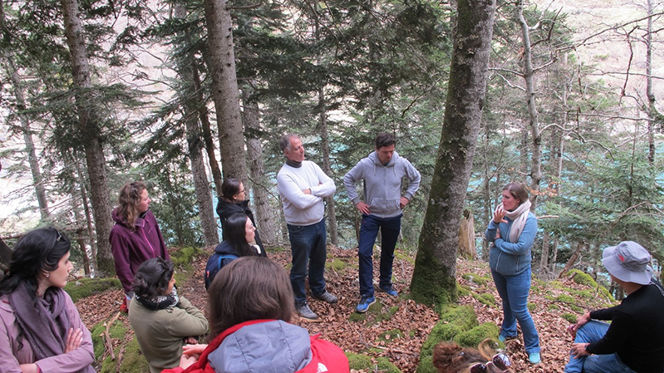
Visits to case study sites
First, the participants discovered the various natural hazards faced by the city of Freising in Germany: flooding, debris slide and heatwaves. For this case, they established a diagnostic and a catalog of solutions based on the various implementation sites that they visited during the 10-days long spring school.
In Germany, with Dr. Aude Zingraff-Hamed, participants visited the PHUSICOS Concept case “Isar”, the 8-km long river restoration in Munich and discovered how it addresses flood risk, provide cultural ecosystem services and improve biodiversity. They also visited scare of different sizes in Munich that were under investigation. Priscila Stark introduced them to her research on the role of vegetation in cooling the city climate.
Later with Santiago Fábregas Reigosa, Eric Leroi, Carles Raïmat and Didier Vergès, the participants discovered cases in Artouste (Laruns), France; Santa Elena, Spain; and Erill la Vall in Spain where NBSs, namely reforestation combined with woody protective structures, address rockfall and debris slides. Lastly, Laurent Lespine introduced them to a case in Capet, France, where reforestation is proving effective in increasing the life-time of grey infrastructure as well as reinforce them for mitigating avalanches.
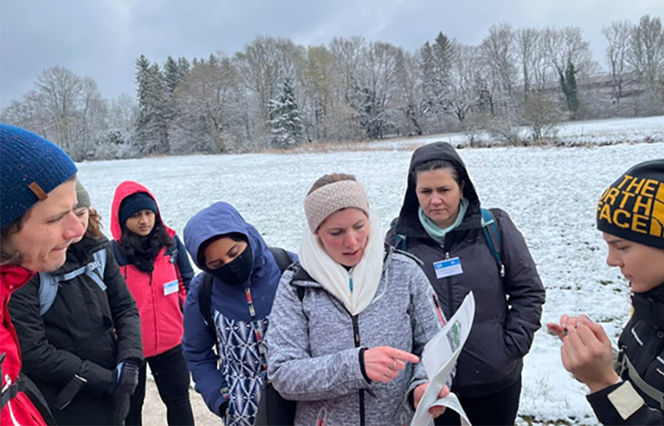
Participants had the chance to engage project coordinators and engineers working at these demonstrator sites on the ground and other stakeholders to understand not only the technical aspect of these NBS interventions but also, what goes into their planning and governance. They were for example very welcomed by the mayors of Laruns, Robert Casadebaig; and Vall de Boí (a community of nine villages including Erill la Vall), Sònia Bruguera Diego.
Both decision makers explained to the participants in very deep detail the drivers of designing and implementing NBS in their villages and how scientists and engineers can support the political sphere in implementing NBS. Especially the missing standards in comparison with grey solutions have been pointed out as a substantial barrier for implementation.
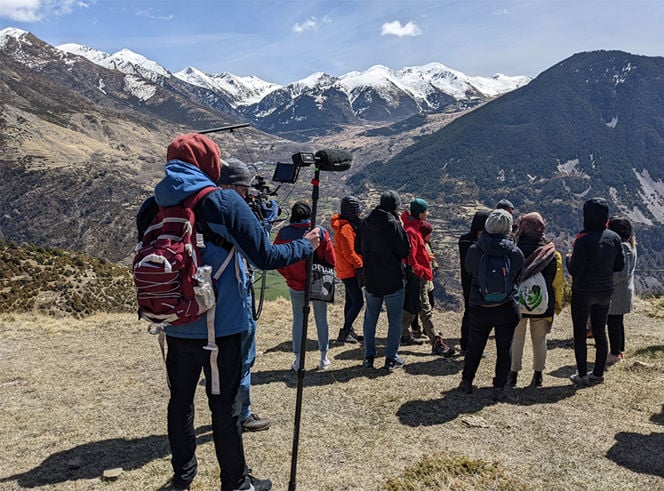
Evaluation of NBS
As take-home messages, participants of the Spring School expressed confidence in the effectiveness of NBS for natural hazard mitigation based on the cases they witnessed at the demonstrator sites. However, NBS is still in its early stages and care has to be taken to not oversell it as the panacea to all socio-environmental challenges since its limits are not well known yet.
In the Global North, more studies are needed to particularly settle the concerns of decision-makers on the effectiveness of NBS. In the Global South, NBS is seen as a bridge between pre-existing development gaps and climate-related risks as well as a conduit towards climate-resilient development.
Participants concluded that the potential of NBS in the Global South is particularly high as that part of the world is rapidly urbanizing and NBS could provide a judicious approach for strategic planning. There, the integration of NBS in landscape and city planning could help to prevent a repetition of planning failures in the Global North.
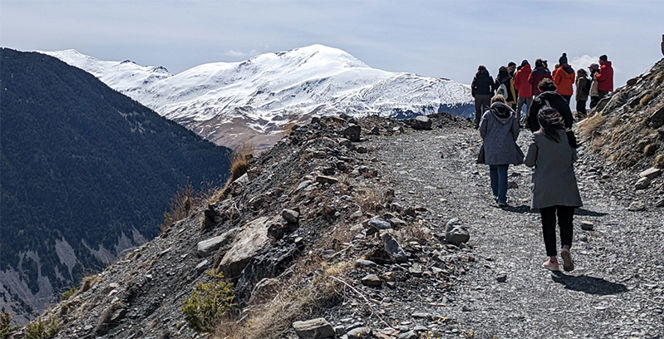
The Spring School has been organized by Dr. Aude Zingraff-Hamed and Kirk Bright Enu of TUM; Didier Vergès and Eva García Balaguer of the OPCC; and Séverine Bernadie of the BRGM. They have been supported by BayFrance Team. The Spring School has been funded by the European Union’s Horizon 2020 Research and Innovation Programme under the Grant Agreement No. 776681 and the Deutsch-Französische Hochschule Programme.
News item prepared by
Dr. rer. nat. Aude Zingraff-Hamed, Research Associate, aude.zingraff-hamed@tum.de
Chair for Strategic Landscape Planning and Management, Technical University of Munich